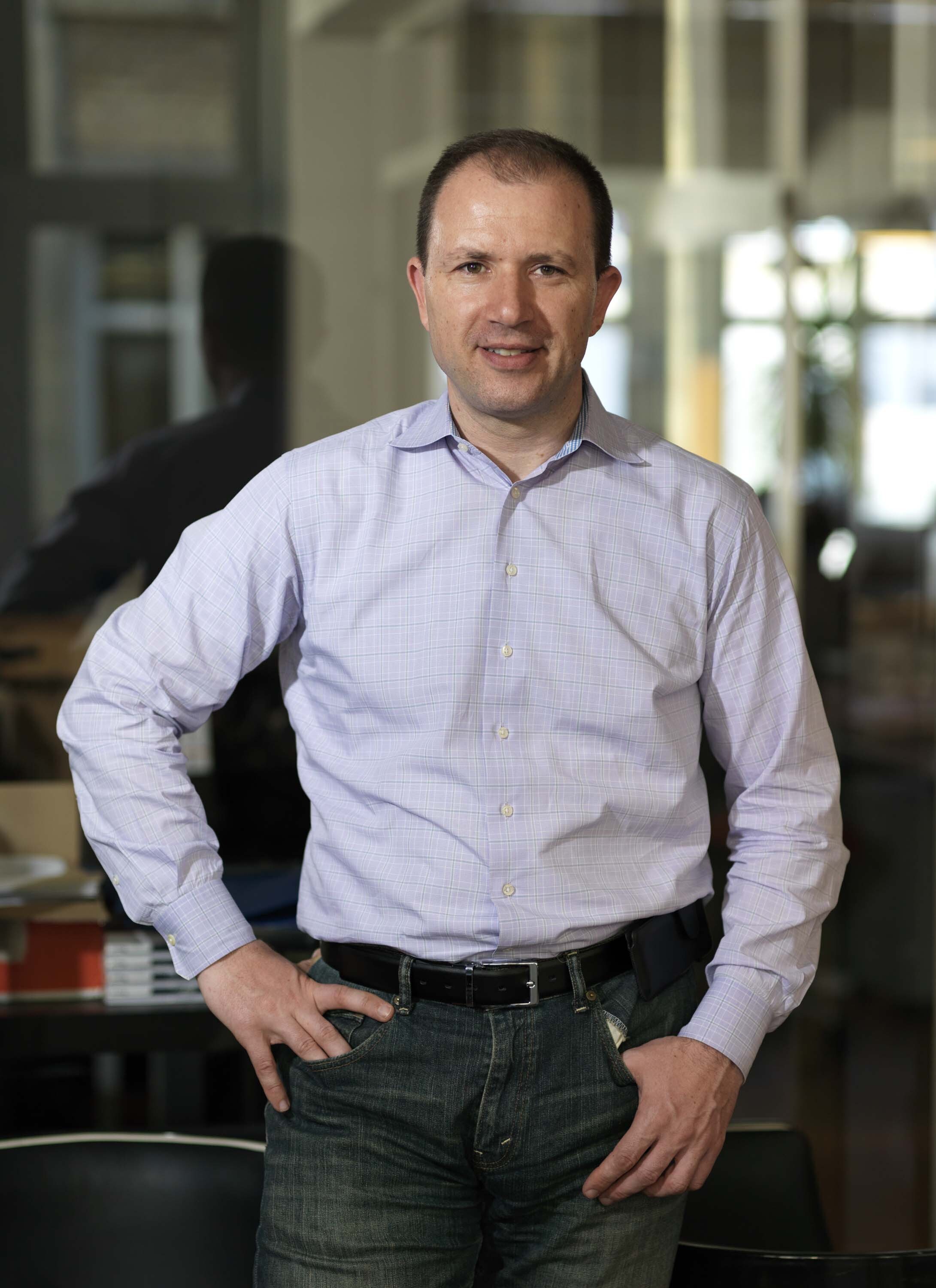
Snap Vision makes shopping easier, letting people use photos to find visually similar alternatives to out-of-stock or out-of-budget items. Behind the scenes, the visual search startup’s tech team has been just as cutting edge, using a multicloud approach since 2015 to run its applications, saving 40% on hosting costs alone.
 Jenny Griffiths, founder and CEO of Snap Vision
Jenny Griffiths, founder and CEO of Snap Vision
Snap Vision runs its artificial intelligence-powered platform on Oracle Cloud Infrastructure (OCI) and its testing environment on Microsoft Azure. “We’re saving 40% on hosting costs, speeding up our development cycles, and reinvesting those cost savings to continually improve our image-matching algorithms,” says Jenny Griffiths, founder and CEO.
Snap Vision is part of the Oracle for Startups program and an Oracle Silver Partner. When they’re working on new algorithms or services, developers port apparel images from a MySQL database on OCI to a research and development sandbox in Azure. After running machine learning experiments to test a new recommendation widget, for example, the production-ready workload is moved to OCI and then rolled out to customers, who can hunt down the perfect hemp sneakers or organic cotton hoodie.
Partnering with multiple cloud providers is becoming the norm, because it makes good business sense. For many larger enterprises, embracing multicloud strategies is seen as a hedge against vendor lock-in and loss of control. For startups, the multicloud approach is more often about finding a faster way to scale.
“While we have startups that run exclusively on OCI, we’re increasingly seeing startups, especially scale-up startups, choosing a multicloud strategy for growth,” says Jason Williamson, vice president of Oracle for Startups. The program offers startups free cloud services, consulting, and even introductions to potential customers. Startups need to know that if growth takes off, they’ll have cloud providers that let them scale without “technology friction. It’s about flexibility, ubiquity, and freedom,” he says. “I believe that multicloud environments will become the standard.”
These four other startups offer a different take on how they use multicloud strategies.
Balancing availability with performance and costs
GridMarkets.com provides an animation rendering platform that helps movie makers and advertisers render videos and simulations in hours that took weeks or months using on-premises computing resources. The GridMarkets platform also helps computational chemists doing drug discovery accelerate molecular simulations.
At any time of day, GridMarkets must respond to unpredictable surges in demand from its global customers, processing customer submissions with minimal or no delay regardless of the volume at that moment. Such responsiveness is possible because of GridMarkets’ multicloud architecture, which gives it access to the capacity it needs and the best combination of price and performance.
The company, with headquarters in San Francisco and Singapore, renders its customers’ feature films, ad campaign content, and other large workloads on OCI, Amazon Web Services, Alibaba, and Google Cloud Platform. “At any moment in time, one of our cloud partners can provide a compute unit that’s more cost-effective than another, so we need to route to those locations immediately,” says Mark Ross, CEO and cofounder.
 Mark Ross, CEO and Cofounder of GridMarket
Mark Ross, CEO and Cofounder of GridMarket
The performance differences can be subtle. “Even the slightest performance improvement can have a huge impact on the speed and cost, especially when those workloads involve aggressive timelines, massive budgets, and complex scenes,” Ross says. For example, before Super Bowl LV, in which the Tampa Bay Buccaneers defeated the Kansas City Chiefs, GridMarkets had to render an ad campaign in 72 hours. For an ad agency to do that on typical on-premises systems, the job could take up to a month to complete. “Because of our multicloud strategy, we were able to dynamically provision 350 32-core virtual machines, a half-terabyte of file storage, and get the job done with time to spare,” Ross says.
While numerous factors determine how GridMarkets distributes its clients’ workloads, the surging demand for artificial intelligence, machine learning, and analytics jobs makes any provider with a reliable source of GPUs interesting. “For us, Oracle has always been that reliable source. Of course, the other platforms offer GPUs, but they’re not always available,” Ross says.
Moving workloads beyond the enterprise
Snapper Future Tech has been helping companies build and run Hyperledger and Ethereum-based blockchain applications since 2017.
Seeing a dearth of blockchain engineering talent in India and slow adoption by Indian companies, the Pune-based company launched the Indian Blockchain Institute in 2019 to educate and certify blockchain pros. Today, the Oracle for Startups participant offers training, consulting, and a development platform designed to help businesses build their own blockchain applications. “Because blockchain goes beyond a single enterprise to bring multiple entities together on a single network, we need to support customers that run on a variety of different cloud platforms,” says Kamlesh Nagware, CTO of Snapper Future Tech.
 Kamlesh Nagware, CTO of Snapper Future Tech
Kamlesh Nagware, CTO of Snapper Future Tech
Snapper Future Tech built its platform SnapCert using Oracle Blockchain Platform, powered by Hyperledger Fabric, which runs on Oracle Cloud Infrastructure. The company also runs development and testing workloads on AWS and Azure. “All of our ERP, analytics, and business-critical applications are integrated in OCI, while our SDKs, APIs, and other DevOps tools run on AWS and Azure,” says Naresh Jain, the company’s cofounder.
Snapper Future Tech helps companies design, build, test, and deploy their own blockchain applications on whichever cloud platform they choose. “Being able to support our clients in any cloud environment gives us more flexibility, more deployment options, and it’s really a huge key to our success.”
Using AI to determine where workloads should run
 Laurent Gil, cofounder and chief product officer of CAST
Laurent Gil, cofounder and chief product officer of CAST
The Miami-based startup CAST.AI has built a machine-learning model that looks across different cloud platforms to determine the best place to run a given workload. “Our algorithm can determine that the best price to keep a data store is on Azure but recommend that all the heavy compute virtual machines (VMs) should come from Oracle to get the best price and performance for compute,” says Laurent Gil, cofounder and chief product officer.
The idea to start CAST.AI came from Gil’s frustration of losing control of a cloud bill. At Zenedge, a cybersecurity startup that Gil founded and was acquired by Oracle, the cloud infrastructure bills had ballooned from $2,000 a month to $150,000 a month within three years. “We were told by AWS to prepay $6 million for a three-year contract if we wanted to get a cost reduction,” Gil says. “You can’t run a startup like that. This is why Oracle Cloud is so attractive for young companies.”
That’s also when Gil and his team decided to apply AI capabilities to helping other companies understand what was driving their cloud spend. “It was the perfect use case for artificial intelligence. We could use machine learning to train our model, move workloads from one cloud to another, and then help companies save up to 70% of their compute costs,” Gil says.
CAST.AI’s engine analyzes multiple cloud vendors, including AWS, Azure, Google, Digital Ocean, and Oracle for availability and pricing of compute, memory, and storage for any application using Kubernetes. The engine can mix and match more variables and options than a human brain can manage.
“Developers might request 10 virtual machines running on four-core processors from their main cloud provider. Our engine look across multiple cloud platforms to get a much better price for comparable performance running five VMs on eight cores,” Gil says. “And maybe it’s not another VM at all. Maybe it’s memory. Why do you need to spend any time provisioning resources, when our engine can decide that for you?”
Deployment options for specialized workloads
Aptivio, a revenue management app, promises to help business-to-business sales reps uncover hidden opportunities by monitoring more than a million businesses to spot digital buying signals. Aptivio then pushes out personalized action cards to help reps advance their deals.
 Guy Mounier, cofounder and CEO of Aptivio
Guy Mounier, cofounder and CEO of Aptivio
Also part of Oracle for Startups, Aptivio’s multicloud strategy includes “all of the four major clouds,” says Aptivio Cofounder and CEO Guy Mounier, “And each one runs a specialized workload.” So far, it’s working. “We’ve experienced very little, if any, latency between OCI, Azure, AWS, and Google,” Mounier says.
Aptivio’s platform runs 24-7 worldwide, and the company uses OCI to manage and process the vast amounts of data that it captures from online sources. But the company also runs workloads on other clouds to deliver the best possible user experience at scale. “While OCI has strong security, very high availability, and the ability to process internet-scale data volumes on demand, we use Google to manage data enrichment and natural language processing, Azure for data orchestration, APIs, and automation, and AWS to store the frontend components that deliver our user experience,” Mounier says.
Conclusion
Multicloud strategies have become easier to implement in part because startups have made technologies such as Docker, Kafka, and Terraform core parts of their architecture and deployment strategies, says Oracle’s director of startup architecture, Ben Hill. Hill’s cloud architects are migrating workloads onto Oracle Cloud Infrastructure in a matter of hours by changing just a few lines of code. “Not only do these tools streamline the deployment process, but they also make it easy to mix and match workloads between cloud providers.”
